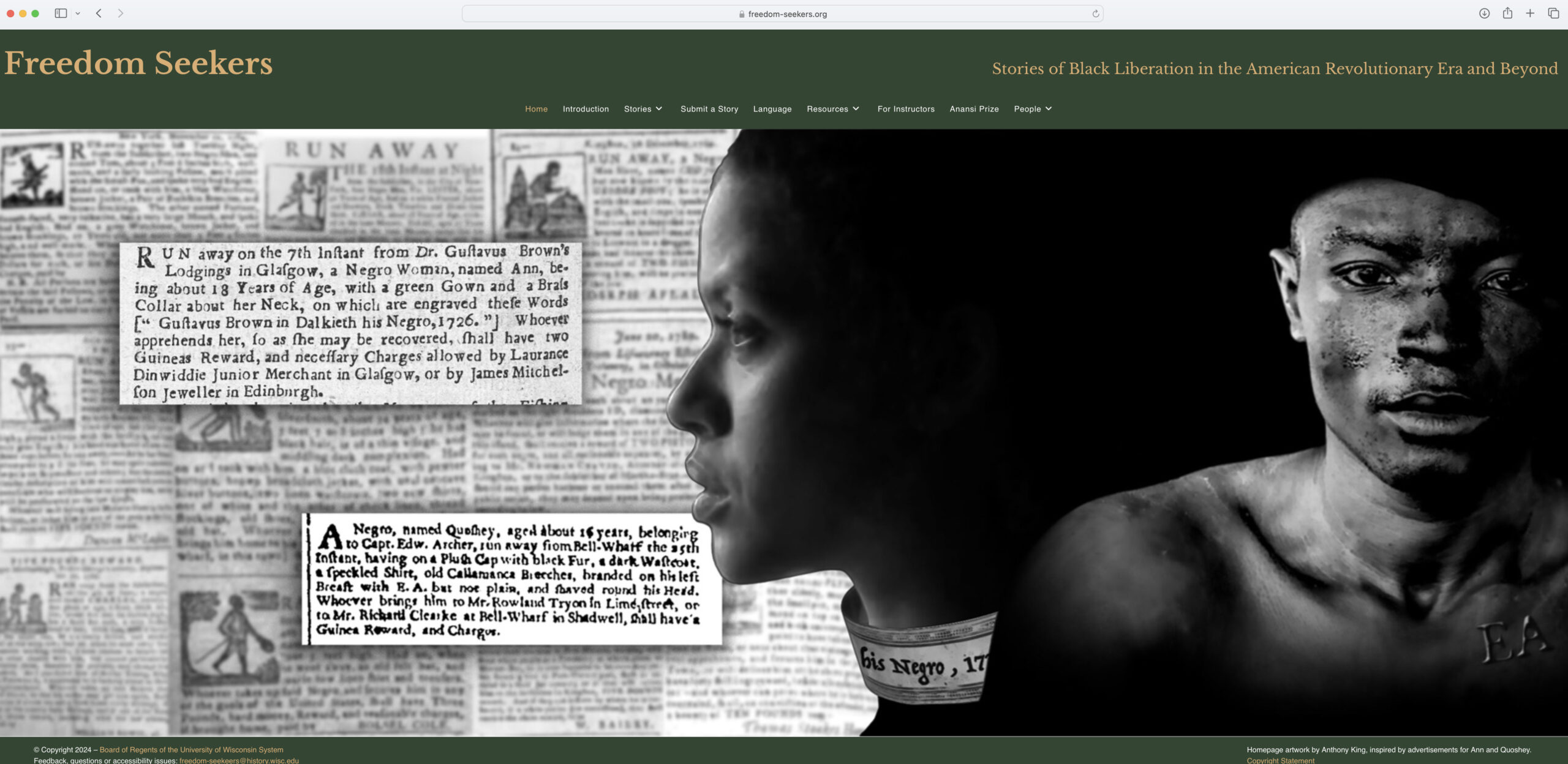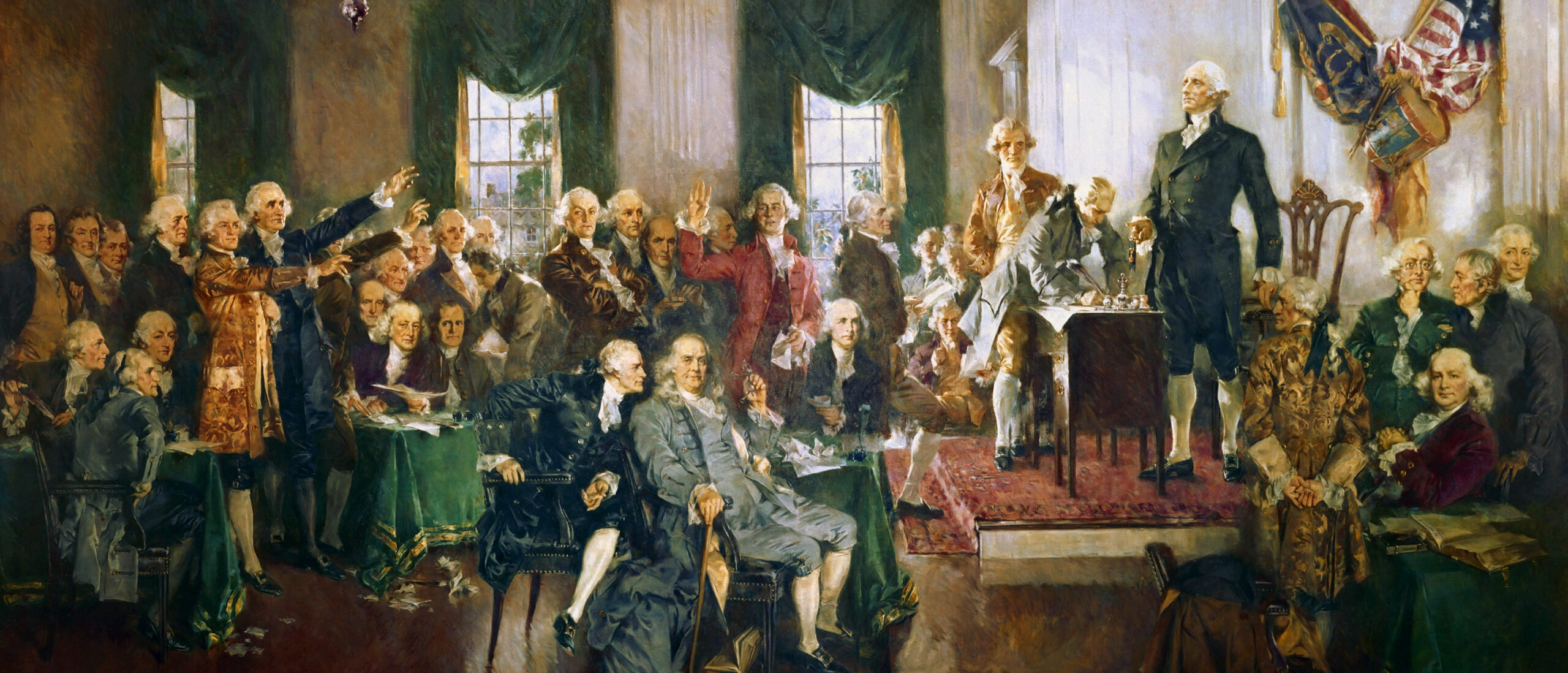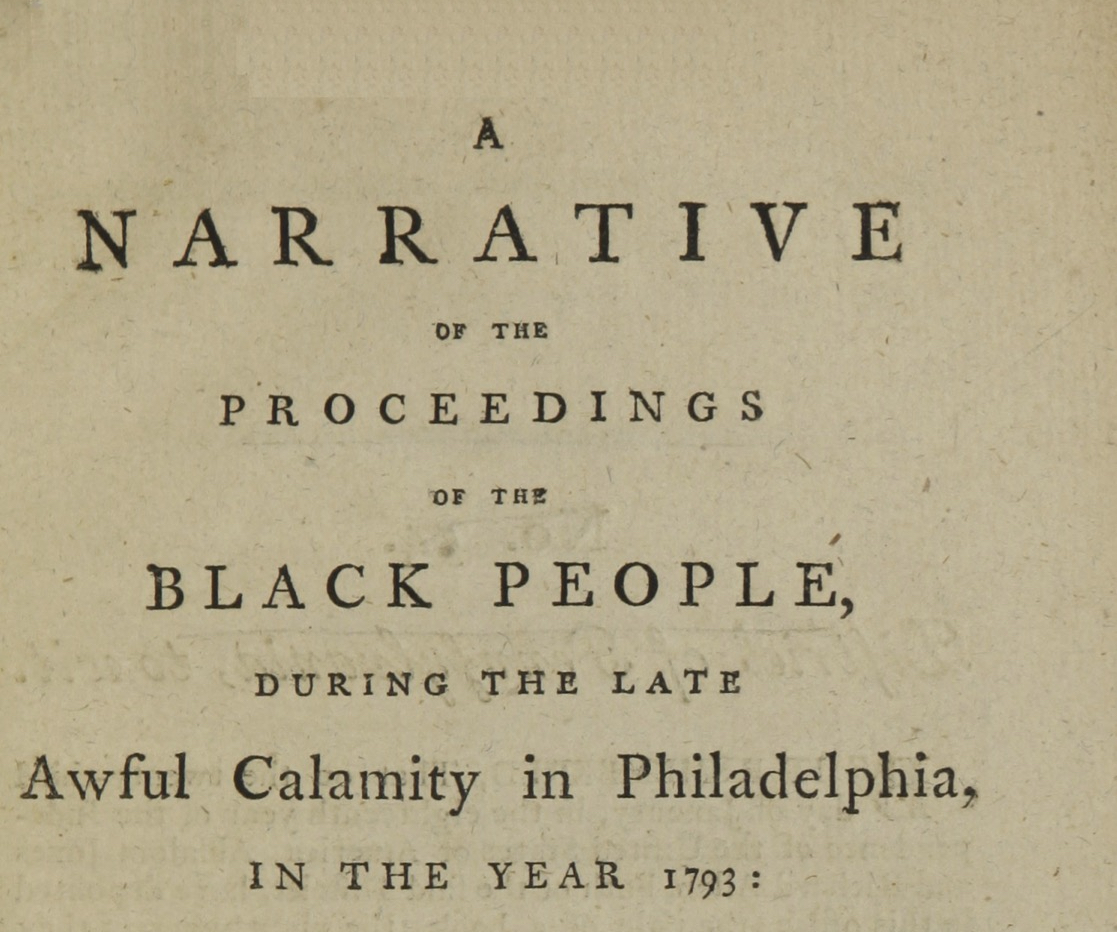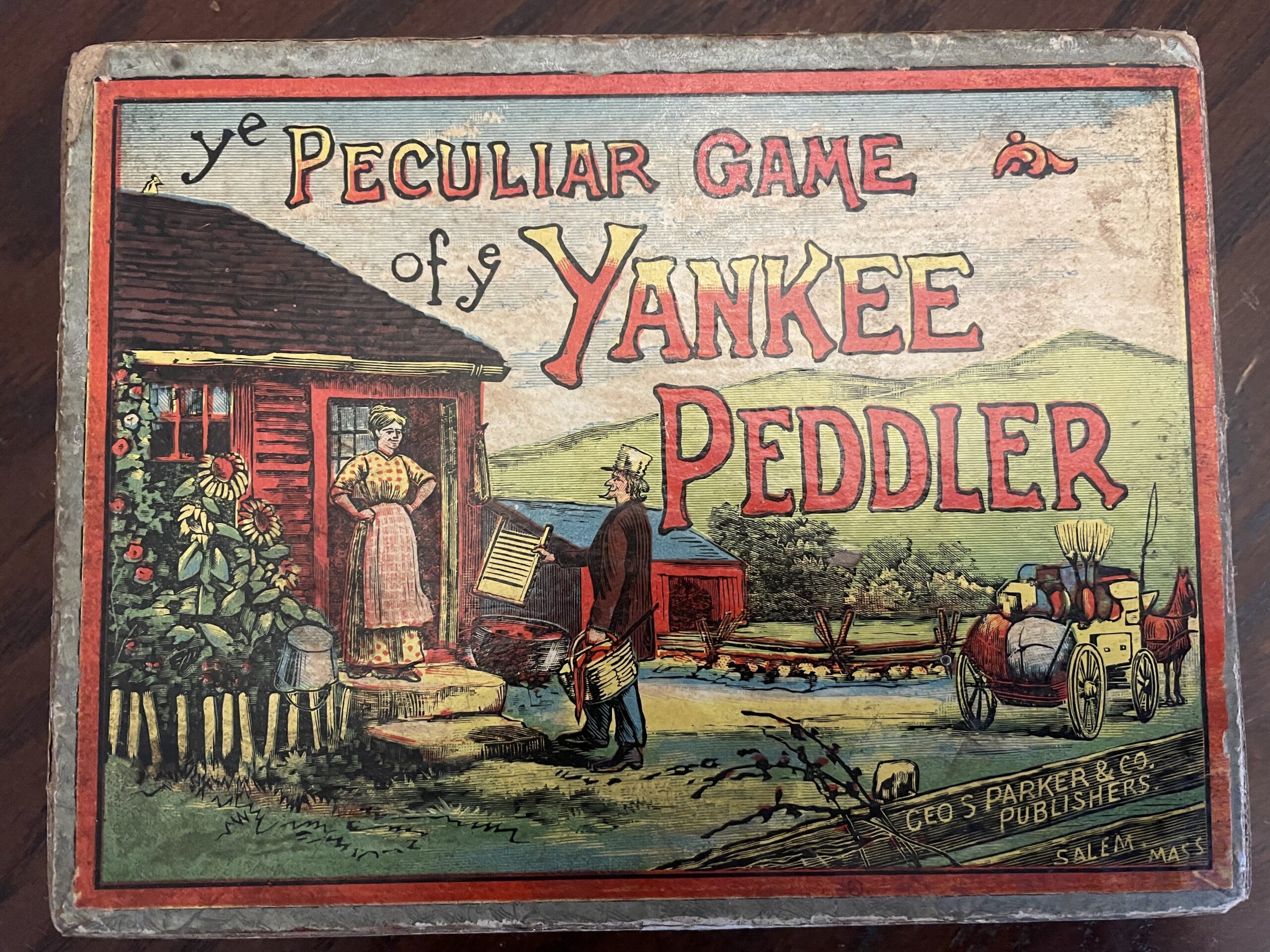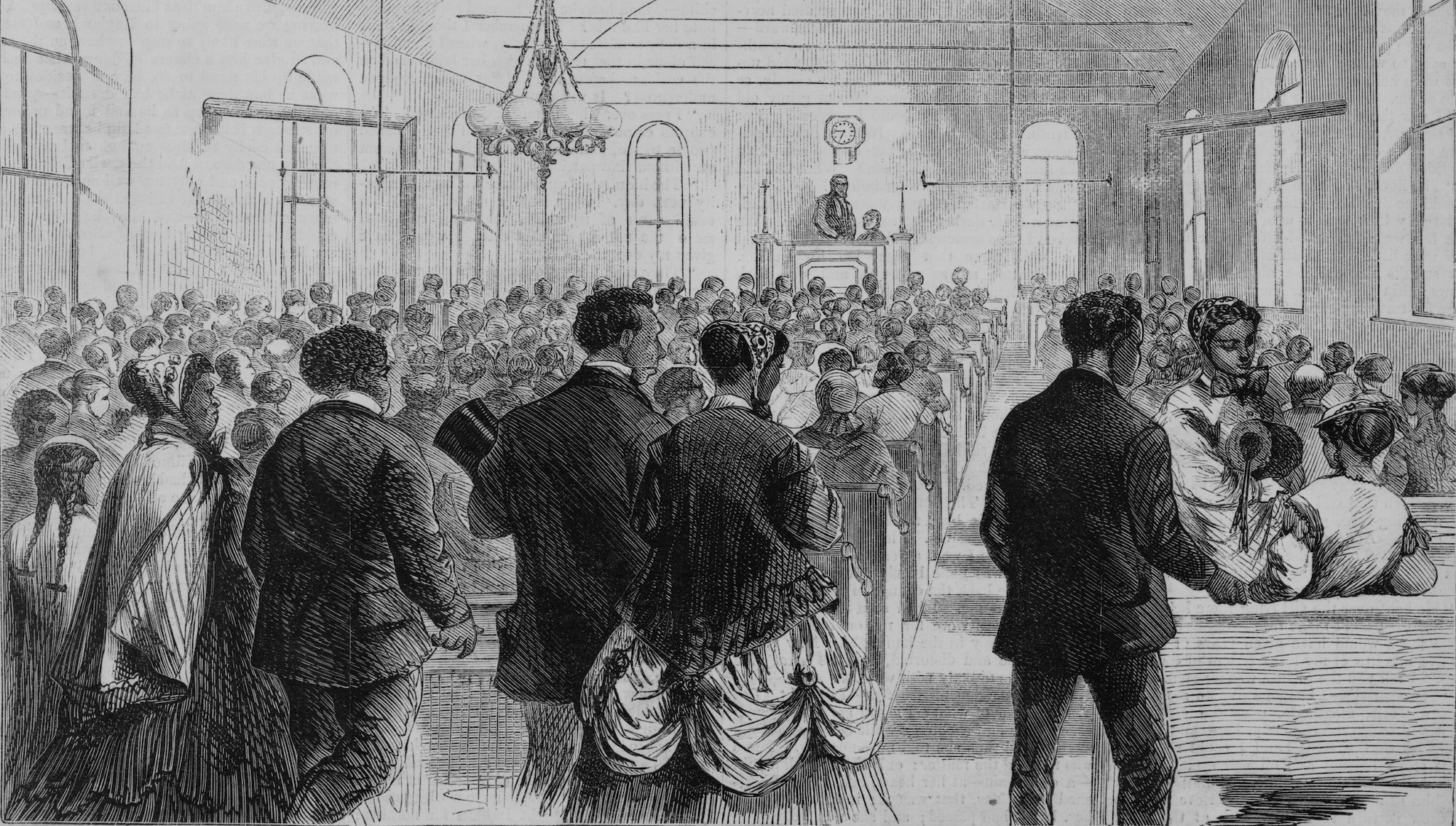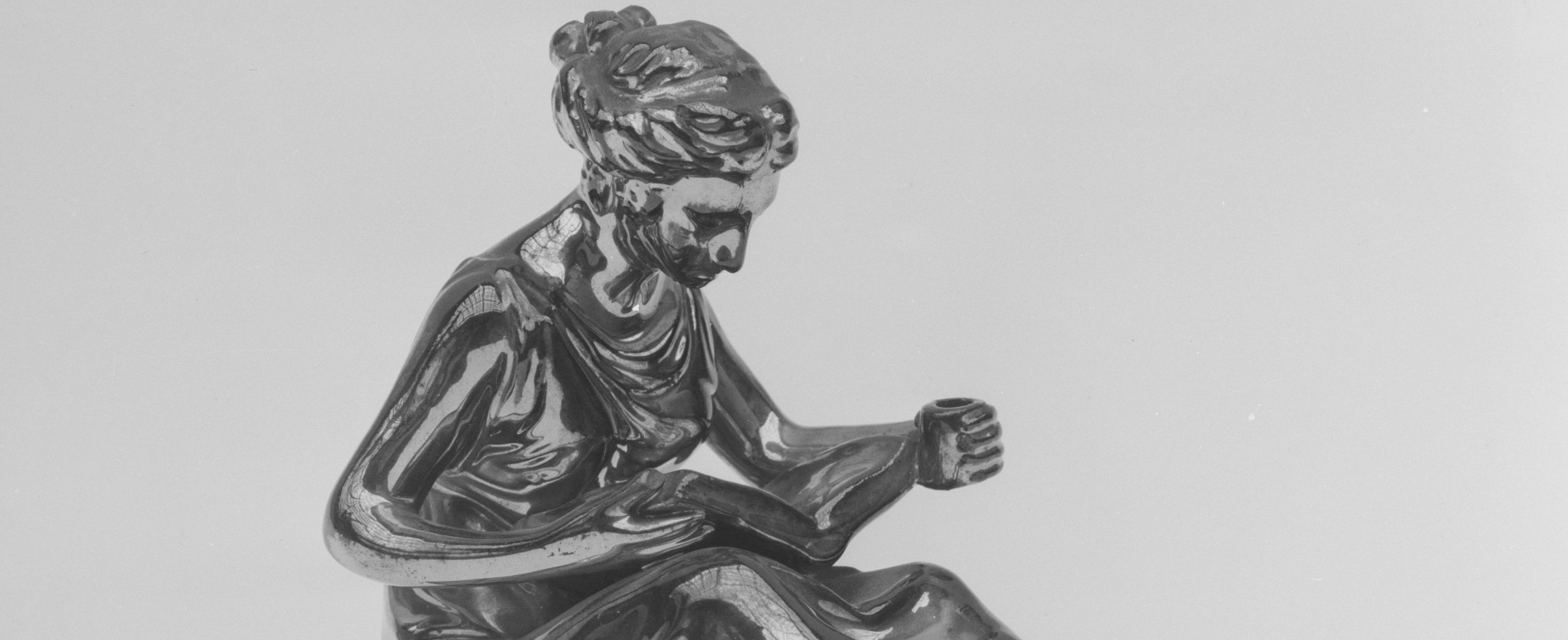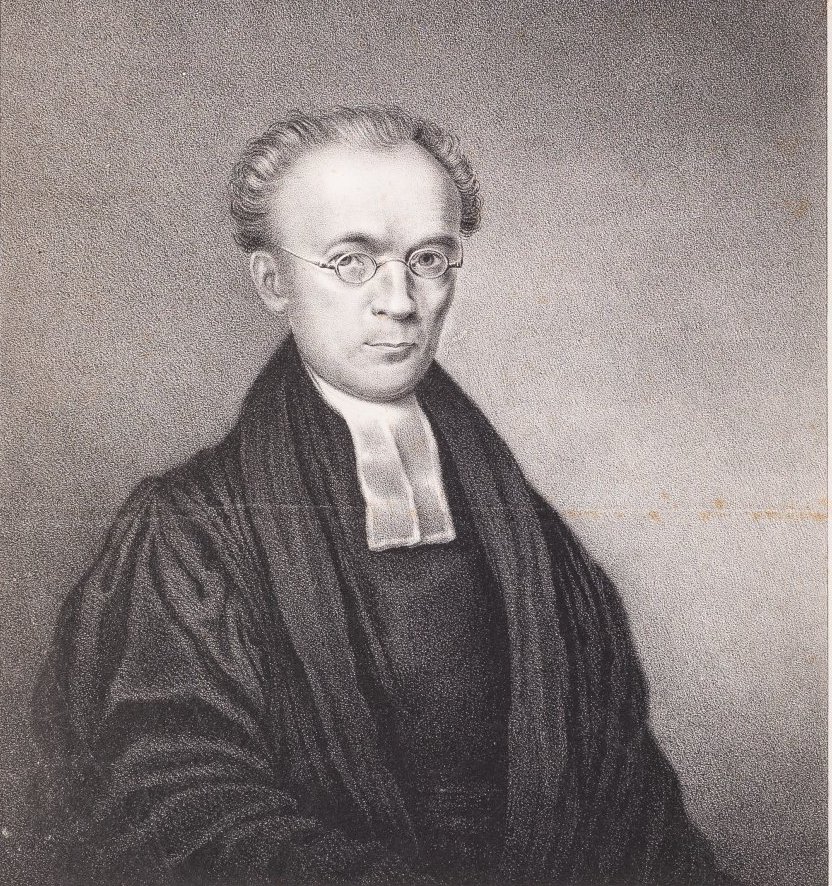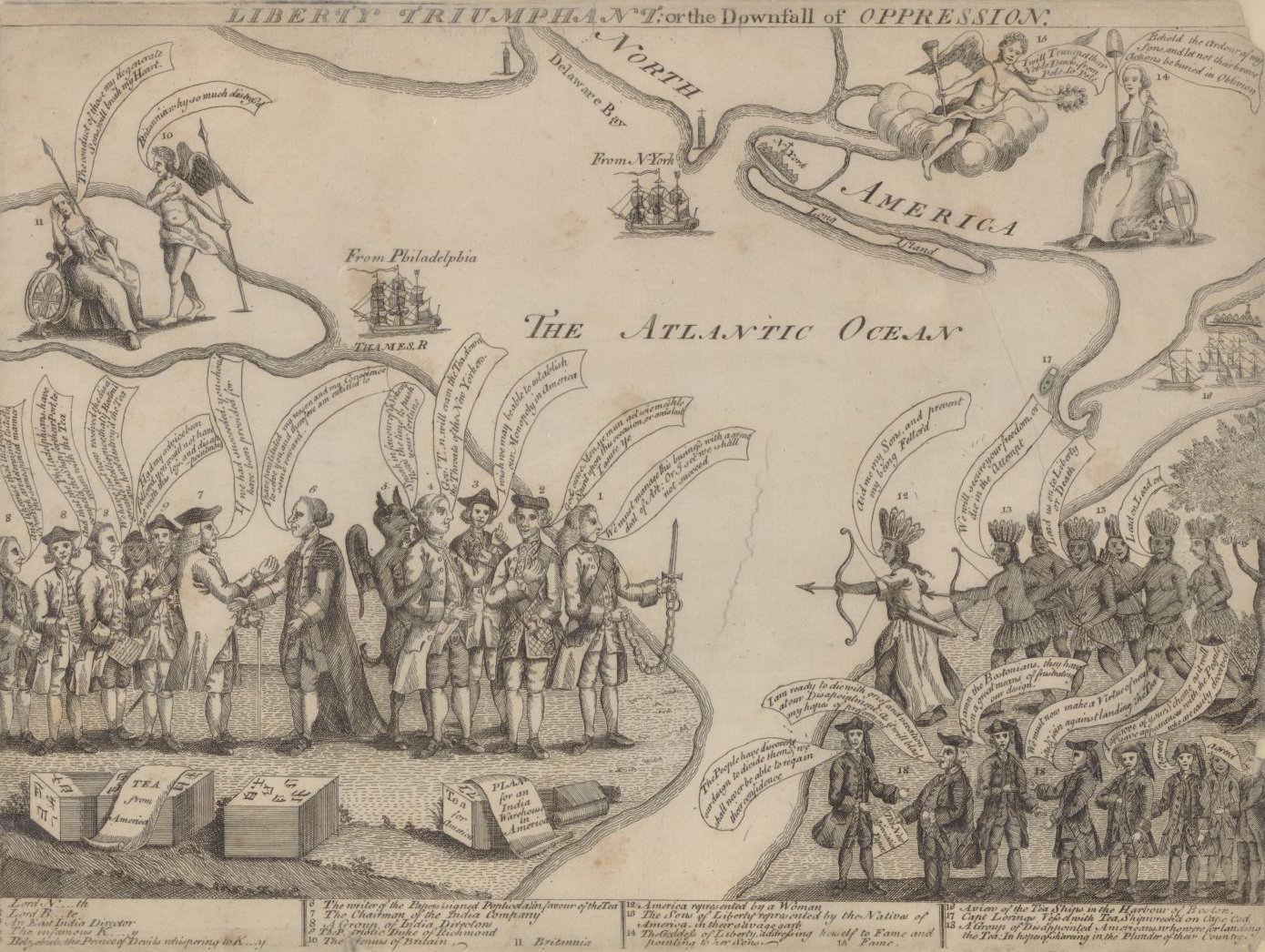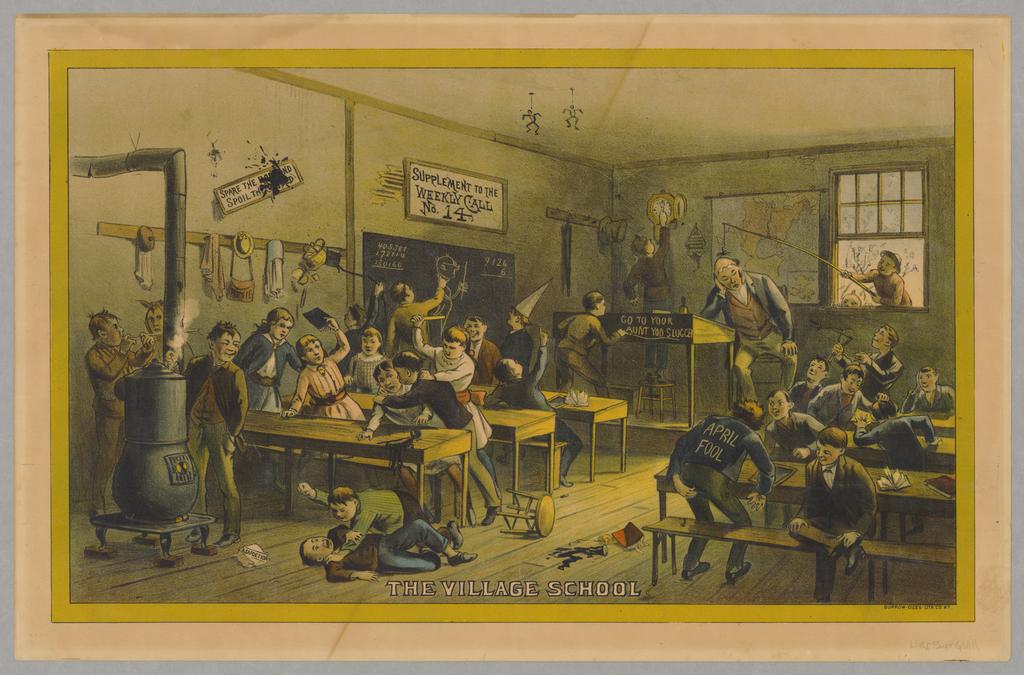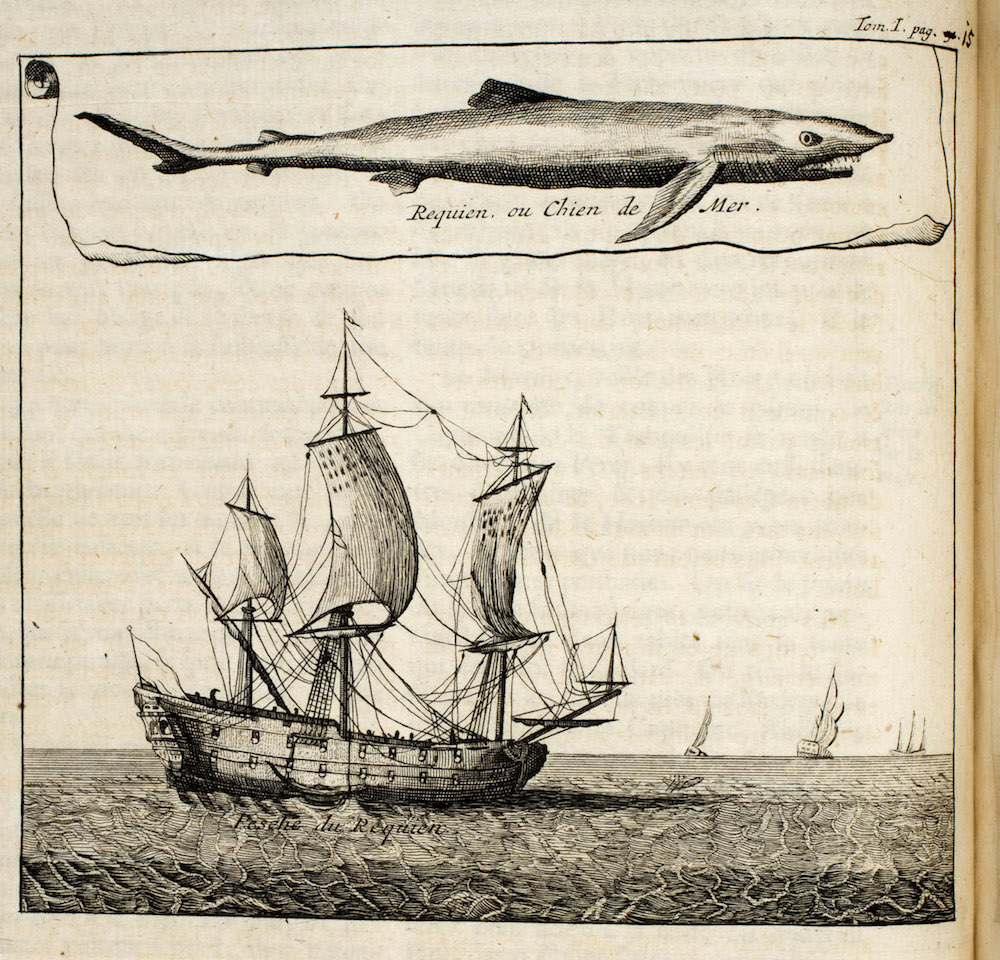He delivered Daniel from de lion’s den,
Jonah from de belly ob de whale
And de Hebrew children from de fiery furnace,
And why not every man?
Frederick Douglass claimed that African American spirituals like “Oh Canaan, sweet Canaan. / I am bound for the land of Canaan,” symbolized something more than the hope of reaching heaven. To Douglass, these spirituals carried a powerful message about the North and potential freedom. And scholars agree that there was a latent and symbolic element of protest in the slave’s religious songs, which frequently became overt and explicit. Even Harriet Tubman, “the Moses of Her People,” sang “Sweet Low, Sweet Chariot,” to signal her presence and willingness to lead men, women, and children escaping along the Underground Railroad.

Analyzing slave spirituals is an integral part of the study of the pre-Civil War era in my Advanced Placement United States History classes at Half Hollow Hills High School East in Dix Hills, New York. As part of an overall discussion on how slavery affected African Americans, my students closely read these spirituals for both their religious and secular meanings.
Half Hollow Hills High School East, while situated in a mainly middle-class community, is ethnically and economically diverse and is part of a high achieving district on suburban Long Island. The Advanced Placement U.S. History classes include enthusiastic juniors and seniors who reason at different levels, but are looking for the challenge of a college-level course in the high-school environment. Tasks like the analysis of slave spirituals give them an opportunity to hone their critical thinking skills.
One way I introduce the analysis of slave spirituals is through John Lovell Jr.’s book Black Song, the Forge and the Flame (New York, 1972). Lovell suggests that spirituals reflected the values and concerns of blacks in the antebellum South in the five ways: by providing the community with a true, valid, and useful song; by keeping the community invigorated; by enabling the group to face its problems; by helping to stir each member to personal solutions and to a sense of belonging in the midst of a terrifying world; and by providing a code language for emergency use.
The five meanings suggested by Lovell guide my class’s close reading of spirituals like “Joshua, Fit de Battle of Jericho”; “Didn’t My Lord Deliver Daniel”; and “Steal Away.” We listen to recordings and read lyrics, and I ask my students to use these songs to assess the validity of Stanley Elkins’s view of slavery as a “closed system of dehumanization,” destructive of community.
Initially, the students tend to dwell on the explicit message of the spirituals. They assert that the spirituals focus on another world and encourage slaves to passively accept their fate. They perceive slave spirituals as a coping method: “They are talking about heaven,” students are likely to say. Or, “They are using God in a passive way,” or, “They are using the song to connect them to the master and his religion, thereby isolating them from one another.”
Gradually, the classroom dialogue shifts to the implicit messages. One student indicates that the language of flight is predominant: there is mention of transportation, places to go, and signals to decipher. Other students begin to see expressions of joy in the activities that are shared. Some students skilled in music often hear the rhythms and begin to explain work movements. The music is seen as proof of slaves saving themselves from dehumanization. Working together creates community, offers one student. “Go Down, Moses,” believes another, has references to Canaan, the wilderness, and means of travel. These all become signals of flight.
By the end of our discussion, many students have become suspicious of Elkins’s theory; others still support it. “You are reading too much into it. Look at what it says: ‘This world’s a wilderness of woe, O’let my people go.'” After analyzing the implicit and explicit messages of the slave spirituals, I direct my students to visual sources like the painting of a slave scene, The Old Plantation. The Old Plantation shows slaves gathered together celebrating with music. The musical instruments include hollowed-out gourds and reveal the continuity of African heritage. The colored kerchiefs of the women are in the style of the Yoruba of Nigeria.
Students employ the details of The Old Plantation to draw conclusions about the nature of community, the retaining of the African culture, and religious ceremonies. Which details help to explain community? Religious ceremony? What evidence does the painting provide to assess Elkins’s thesis?
I also occasionally use other paintings that can be read for suggestions about African heritage and religious ceremony including John Antrobus’s A Plantation Burial (1830) in the Historic New Orleans Collection; Henry Latrobe’s Enslaved Women Cultivate Tobacco on a Virginia Plantation (1798); George Washington and His Family (1800-01) in the National Gallery of Art; and J. S. Copley’s Watson and the Shark (1778) in the Corcoran Gallery of Art.
To conclude our discussion of slavery, I distribute excerpts from Stanley Elkins’s book Slavery (Chicago, 1959) in which he connects the institution to the concentration camps of Nazi Germany. Students are asked to note the similarities and differences between antebellum American slavery and Nazi camps and to evaluate Elkins’s thesis. They draw upon the evidence from the slave spirituals, paintings, stories, slave narratives, and the textbook discussion of slavery. Observations about the heroism of surviving slavery, the nature of community, a symbiotic religious culture that emerges, and the meaning of open and closed institutions are generated in this concluding dialogue.
Viewing the array of evidence, students tend to argue that while the concentration camp was what Elkins calls a “total closed system” focused on extermination, the slave system was not closed since it afforded access to other places and often used spirituals to provide signals. As one student noted during our recent classroom discussion, “The goal of the system is not death but production and prosperity. It benefits the owner to create warmth and community. Washington included a slave in his family painting.”
The study of American slavery is a valuable opportunity to expand the traditional collection of text-based primary documents to incorporate music and art–important windows into the impact of America’s “peculiar institution.”
Selected spirituals’ lyrics
“Joshua Fit de Battle of Jericho”
Refrain:
Joshua fit de battle of Jericho
Jericho, Jericho,
Joshua fit de battle of Jericho,
And de walls come tumblin’ down.
Stanzas:
You may talk about yo’ king ob Gideon;
You may talk about yo’ man ob Saul;
Dere’s none like good ole Joshua
At de battle of Jericho.
Up to de walls ob Jericho
He marched with sper in han’.
“Go blow dem ram horns,” Joshua cried,
“Kase de battle am in my han’.”
Den de ram sheep horns being to blow:
Trupets begin to sound.
Joshua commanded de chillen to shout,
An’ the walls come tumblin’ down.
“Steal Away”
Refrain:
Steal away, steal away,
Steal away to Jesus!
Steal away, steal away home,
I ain’t got long to stay here.
Stanza:
My Lord calls me,
He calls me by the thunder;
The trumpet sounds within my soul,
I ain’t got long to stay here.
“Git on Board, Little Chillen'”
Refrain:
Git on board, little chillen,
Git on board, little chillen,
Git on board, little chillen,
Dere’s room for many a mo’.
Stanza:
De gospel train’s a-comin’,
I hear it jus’ at han’;
I hear de car wheels movin’
An’ rumblin’ thro do lan’.
“Didn’t My Lord Deliver Daniel”
Refrain:
Didn’t my Lord deliver Daniel,
Deliver Daniel, deliver Daniel,
Didn’t my Lord deliver Daniel,
An’ why not every man?
Stanza:
He delivered Daniel f’om de lion’s den,
Jonah f’om de belly of de wale,
An’ de Hebrew chillen f’om de fiery furnace,
An’ why not every man?
“Deep River”
Refrain:
Deep river,
My home is over Jordan,
Deep river, Lord,
I want to cross over into campground.
Excerpt from Stanley Elkins, Slavery
(Elkins’s footnotes have been omitted.)
Historians have debated the evils of slavery for generations. James Ford Rhodes (1893) described it as a curse to both masters and slave. Ulrich B. Phillips (1918) countered that the evils of slavery were wildly exaggerated. He emphasized the humane friendship between kind-hearted master and contented, faithful, and childlike slaves. Kenneth Stampp (1956) reasserted the traditional view, showing the harshness and cruelty of the system. My interpretation makes a fresh examination of slavery through the lens of social psychology to provide a new perspective to the old debate on the evils of slavery, and it provides insights into the behavior of slaves and masters.
Basically, slavery in the United States was much worse than slavery in other countries and had a much more severe effect on the slaves. American slavery was comparable in many ways to a concentration camp. It took away personal initiative from slaves and destroyed their personalities.
Unlike slavery elsewhere, slavery in the United States had no institutions, such as the church or government, to either oppose the slave owners, or to control slavery for the benefit of the slaves. Slave owners had complete dominance over their slaves. In contrast to relatively “open” systems of slavery in other countries, slavery in the United States was a “closed” system. This contrast can be illustrated by comparing the slave systems in Latin America and the United States.
In Latin America slavery was a relatively “open” system. Slaves there had certain rights and some possibilities to develop themselves personally. The Catholic Church and the mercantile governments of the European Powers ruling the Latin American countries intervened frequently in the slave system. The slave owner had to be conscious of the clergy and government officials in his dealings with his slaves. As a result, the harshness of slavery was softened considerably.
Slaves in Latin America were not automatically slaves forever; they could purchase their own freedom. Slaves were thought to have immortal souls and, as such, were to be legally married and received the sacraments. Masters’ disciplinary power over slaves was limited by the laws of the government. Masters were liable for the murder of their slaves. Although the law was violated, and owners were sometimes cruel to their slaves, the laws were not as widely violated as they were under the English or in the United States. Government officials and priests regularly checked to see if slaves had been mistreated. Slaves could also own property. Lastly, slaves in Latin America regularly had contact with the rest of society. One of the results of this was a much higher rate of intermarriage than in the United States.
By contrast, slavery in the United States was a “closed” system. Slaves had almost no rights and were totally dependent upon their master for nearly everything. The term of servitude in the United States was for life; slaves couldn’t buy their freedom. There was no recognition of marriage or the family. Slaves were to be sold to the highest bidder even if it meant breaking up the family. Conversion to Christianity meant no difference in status or treatment as slaves. Slaves as property took precedence over slaves as human beings. They had no civil rights, right to own property, or any other rights. Slaves were limited to the plantation–they had little contact with the rest of society. They were isolated on the plantation under the absolute control of their owners, to whom they were to give complete obedience. The masters exercised such extensive power because there were no governmental restrictions on them.
The result of the closed system of slavery in the United States was to destroy the personality of the slave; that is, to reduce his behavior to that of a child. Historians have long noticed the passive personality among slaves. Many slaves were docile, irresponsible people, perpetual children incapable of mature behavior. Slaves passively did whatever they were told. They had no initiative, and offered no resistance to slavery. Some people have contended that this is just another white stereotype of blacks, yet abundant evidence proves that the passive personality type did exist in the United States.
Since there is no evidence of the passive personality in slavery in Latin America, one is left with the conclusion that the passive personality must be the result of the authoritarian nature of American slavery. The absolute power of the slave owners over their slaves, but not necessarily the cruelty of the masters, was enough to produce passive slaves.
Many of the blacks brought from Africa to the United States as slaves had been warriors or had held high position in their advanced civilizations. They were transformed into passive people as a result of their enslavement. There was the shock of being caught and enslaved, and the several-week march to the coast. The next shock was their sale to the Europeans. They were put into pens and branded. Blacks rejected as slaves were left to starve. The cruelest step was the middle passage on slave ships across the Atlantic Ocean. Slaves were packed in and chained down in the hold of the ships for two months, where they remained amidst their own vomit and excrement. If they survived this ordeal they were introduced to severe masters and conditions in the West Indies. Then they were transported and sold to owners in the United States. By this time two-thirds of the slaves had died.
After all these shocks to their personalities, slaves could not be expected to exhibit aggressive behavior. They had to look for new cues for the type of behavior expected of them in America. Since the master had complete control and authority, the only person the slave could look to was the master. The master became like a father. The result was the child-like personality dependent upon the master.
With this dependent personality of slaves in full-scale wars, there were very few in the United States. Moreover, the few revolts in the United States were led by non-slaves. This phenomenon supports the view that slaves in Latin America retained much of their personalities, including their will to resist.
The striking aspect of slavery in the United States, and especially the passive personality, is its similarity to personality changes in concentration camps under Hitler’s Germany. Like the slave owners, the guards (called SS) had absolute power over the inmates. Even though they were brutal, the SS became father figures to the prisoners, since they were the only figures of authority. Inmates accepted the values of the SS, and most inmates did not hate the SS when they were released–they showed no emotion.
Brutalities were so great in concentration camps that inmates soon felt that the brutalities were not happening to them. They testified years later that they had felt separate from their bodies. The tortures were happening to their bodies, but not to them. It was like watching someone else being tortured. The unreal self became the real self. There were few cases of resistance to the guards or revolts in concentration camps, even when they were being herded into gas chambers! There were few cases of suicide–the inmates had completely passive personalities.
It is obvious that there are striking parallels between personality traits exhibited in concentration camps and in slavery in the United States. The effects of slavery in the United States on blacks were profound. Their personalities were destroyed, and, as such, their ability to form meaningful relationships and families was destroyed. Since these awful consequences did not exist in slavery elsewhere, the conclusion is inescapable that it was the unchecked and complete power of the slave owners, the closed nature of the system in the United States, which led to the childlike
This article originally appeared in issue 1.4 (July, 2001).
Gloria Sesso teaches American history at Half Hollow Hills High School East in Dix Hills, New York





